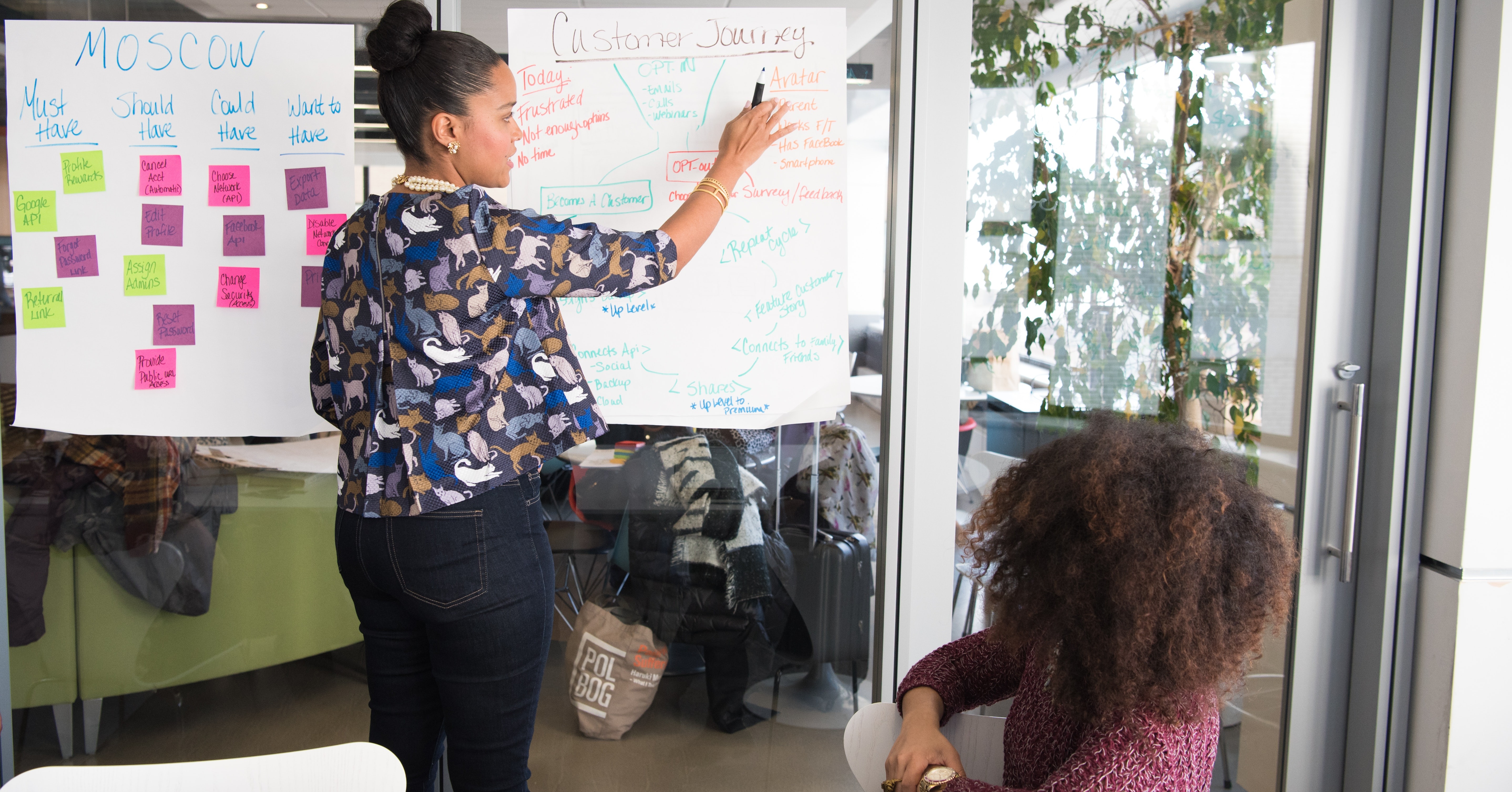ERP implementation is a large and far-reaching project. But with the right preparation, strategy and pre-planning, the process can be less daunting than it seems. Here are six questions to ask yourself before you start.
- Have you identified your problems and set clear goals/objectives?
- Have you aligned mindsets and gained team buy-in?
- Have you considered the impact it will have on your end users?
- Have you picked the right ERP software?
- Have you decided on a post-implementation plan?
1. Have you identified your problems and set clear goals/objectives?
 Photo by ThisIsEngineering
Photo by ThisIsEngineering
Analyst firm Gartner estimates that 55% to 75% of all ERP projects fail to meet their objectives. One of the main reasons businesses fail is because they have no clear definition of what success looks like. This means the end point becomes a moving target, resulting in an unclear ERP implementation strategy.
The more specific and detailed you can be upfront, the more precise your implementation will be. Alternatively, take the pressure off your in-house teams and outsource to a digital transformation agency that understands and is familiar with food industry challenges.
They can work with you to align the implementation strategy with your goals and objectives, plus advise on the best approach to ERP implementation.
The four most common approaches are:
- Single step – all users move to the new system at the same time
- Phased rollout – features, tools and components are deployed over a lengthy period
- Parallel adoption – legacy systems and the new ERP are kept in parallel for a specific length of time
- Hybrid – combination of the strategies mentioned above
2. Have you aligned mindsets and gained team buy-in?
The people element of change and transformation projects are known to be ‘wildcards’. People can be unpredictable - from personal ambitions to workplace politics. That’s why it’s important to align your team’s individual mindsets and address the question, “What’s in it for me?”.
Here are some tips for successful change management:
- Create a culture where all ideas are welcomed and valued – company-wide collaboration helps ensure every employee feels involved and that their opinions matter
- Share your vision across your organisation – keep the teams who need to know involved from the start. This makes sharing the vision easier and reduces the chances of messages being diluted/misunderstood
- Designate leaders to drive the project – they can spearhead the project and ensure clear goals and objectives are communicated. They should also be capable of encouraging innovation within their own teams
- Consider working with a third-party business – their experience helping food businesses like yours transform can be invaluable, especially if you haven’t undertaken many innovation projects before
Your team matters
The people you choose to participate in and drive the project matter. You need people with the skills and competencies for the project - that includes both the skillsets for the ‘technical’ implementation skills and change.
Learn more about how you can successfully transform your food business in our cheat sheet.
Tip: Remember – you’re trying to build the best team possible. This will ensure the project is a success. But you don’t have to rely on your in-house team – outsourcing is a great way to get access to certain skills that your team might lack (for a flexible amount of time).
3. Have you considered the impact it will have on your end users?
Don’t overwhelm your teams by dumping a whole user manual on their desk. You need to plan properly to ensure your employees can adapt easily to changes in any potential processes and technology.
This includes comprehensive (and personalised) training to specific job roles, helping them understand what functions and interfaces are most relevant to their daily tasks.
Tip: Make it an interactive learning experience to help employees prepare for the change.
4. Have you picked the right ERP software?

We strongly insist food businesses invest in industry-specific ERP software because of one significant reason: the product. Foodstuff has a life of its own as its behaviour constantly changes - so it needs to be monitored on a regular basis.
The right ERP software should:
- Give a 360-degree view of your customers – data from sales history, pricing, satisfaction and more provides insights into customer profitability and further sales opportunities
- Increase your inventory knowledge – see available stock, current demand, what’s coming in and information to help optimise inventory holding
- Improve visibility – see “the whole picture” and benefit from integrated systems that work best for fast order entry/fulfilment environments
- Accurate and accessible data for analysis – e.g. cost analysis on products, customers and fast-moving products by customer type. These assist with cash flow and managing the risk of investing in too much stock versus ensuring you can meet customer demands
You can read more into the features of a specialist ERP solution here.
But trying to choose a solution with so many currently on the market can be a daunting thought. That’s why many businesses decide to work with a partner who can offer their experience and expertise to make the process as smooth as possible.
They can:
- Mitigate the risk of unforeseen delays/complications
- Allow your staff to focus on other important business tasks. ERP implementation projects are time-consuming – let an agency handle this so you don’t have to
5. Have you decided on a post-implementation plan?
Your ERP implementation journey isn’t done after go-live. Many things can change when the implementation team pass over the go-live support to the internal/external support. This includes:
- People forget what they’ve learnt in training – you need to be prepared to reinforce best practices regularly
- Helping new/occasional users – it’s important to remember these won’t have the same level of understanding as your regular teams. Help new hires get up to speed by providing ongoing, post go-live support
Plus, leading ERP software is customisable and can scale with your business, so you’ll want to take advantage of those features.
Like with implementation, you should build a team that’s focused on assessing what’s going right/what could be improved. That way, you can take advantage of everything your new system has to offer, including artificial intelligence capabilities and data visualisations.
Ready to start your implementation journey?
There are many generic ERP solution on the market but for the food industry, a simple “box in, box out” approach just won’t cut it.
Download our comparison sheet below and learn the key differences between standard and food ERP software.


